This easy homemade pastry cream recipe uses whole eggs, reduces waste and simplifies your baking! It has the same silky smooth texture as the classic version and is perfect for filling cakes, pastries, tarts, and pies. Enjoy this fail-proof recipe along with my top tips to prevent your pastry cream from turning out lumpy, runny, or curdled.
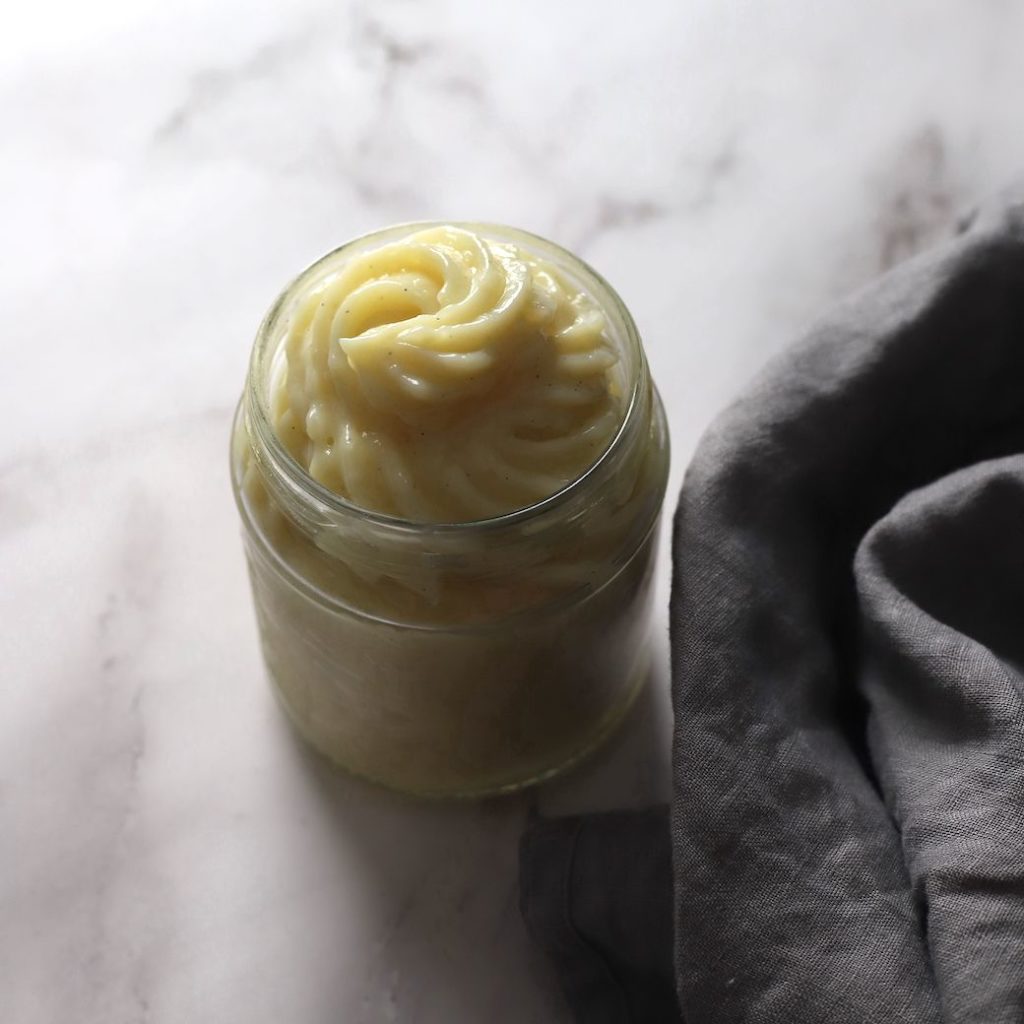
When I first moved in with my husband, I remember wanting to impress him with my baking skills. I’d frequently make desserts we both loved, from cheesecake to mille feuille and eclairs. Whenever I made extra, we’d take some to my mother in law who swooned over the silkiness of my pastry cream. I was chuffed. To me, she was the queen of French desserts. She’d often wake up and make profiteroles before work AND get to work on time. 😮💨
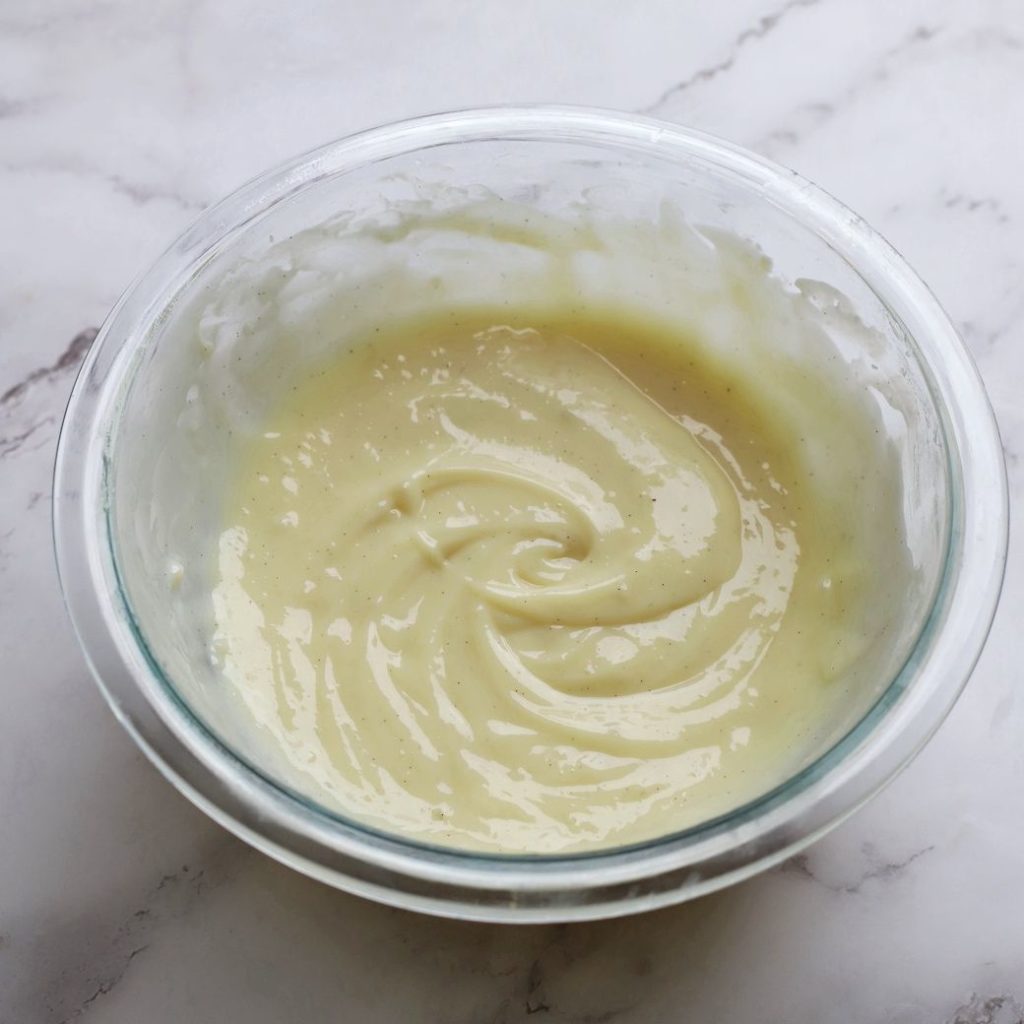
One time we were chatting about our methods and I vividly remember being shocked to learn she made her no-fuss creme patisserie straight in a heavy based saucepan. Meanwhile I was clanking bowls and saucepans, maintaining simmering water as best as I could, ensuring I didn’t elbow my bain-marie by accident, or let it touch the water. 😪 In that moment I knew I had to simplify my technique. Many years on, with patience, practice and lots of experimentation, I found myself whisking the most perfect pastry cream ever. Silky smooth, perfectly pipeable, and not a blip of scrambled egg in sight.
Sure, it’s not the traditional recipe, but that’s the best part! Because this no-fuss pastry cream recipe uses less dishes and is made with whole eggs. You’re welcome. 😉
Ingredients for Vanilla Pastry Cream
You only need 6 ingredients, all of which are pantry or fridge staples that you probably have on hand already.
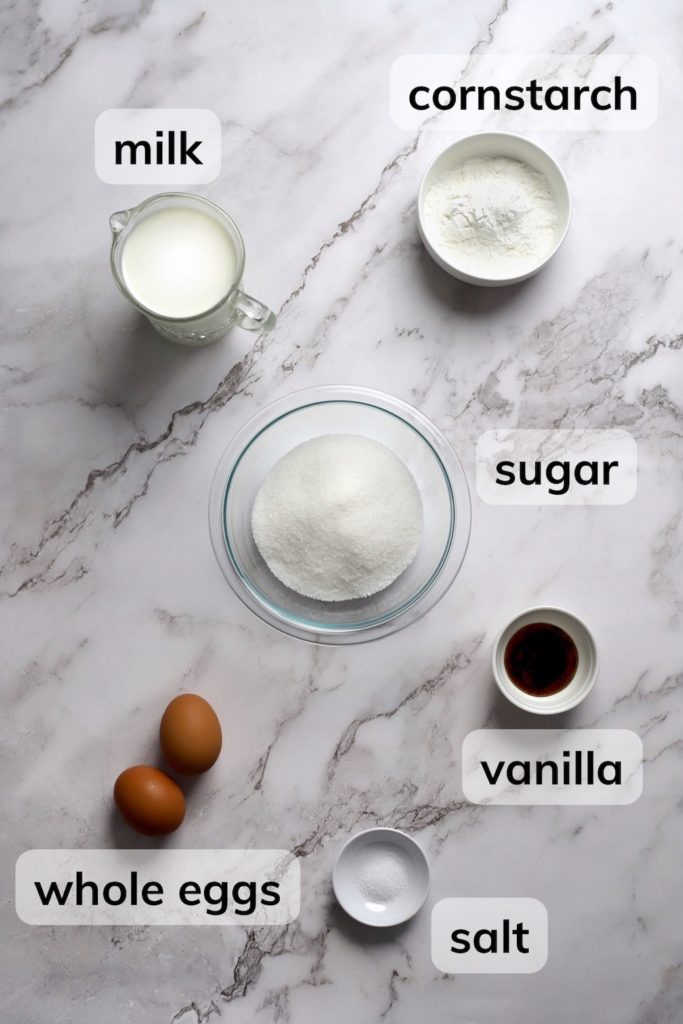
- Whole milk – Using whole (full fat) milk in this recipe gives the final pastry cream its richness and creaminess. For this reason, it’s best to avoid using light (semi-skim) or skim milk.
- Sugar – This recipe uses regular white (granulated) sugar. It is possible to add or reduce the amount of sugar by about ⅛ cup (20 grams) to suit your preference. The amount used in this recipe is perfect for dessert fillings such as fruit tarts or profiteroles.
- Cornstarch – Also known as cornflour in Australia and the UK (not to be confused with maize). Cornstarch helps thicken the pastry cream. You can substitute it with all-purpose flour if necessary. I prefer using cornstarch as it gives a better final taste and texture.
- Whole eggs – Using whole eggs reduces waste, and saves you the hassle of finding a use for the egg whites! Whilst using only yolks is the traditional recipe for pastry cream, it is still possible to enjoy a silky, luxurious pastry cream made with whole eggs.
- Vanilla – Make sure to use high quality vanilla. Opt for scraped vanilla bean seeds or a vanilla bean paste if you’d like to see little specks of vanilla in your final product.
- Salt – Enhances and balances the overall flavour profile of the pastry cream.
How to make no-fuss vanilla pastry cream
Making this easy pastry cream from scratch requires only 7 simple steps. Follow these carefully, for perfectly creamy, silky-smooth goodness. 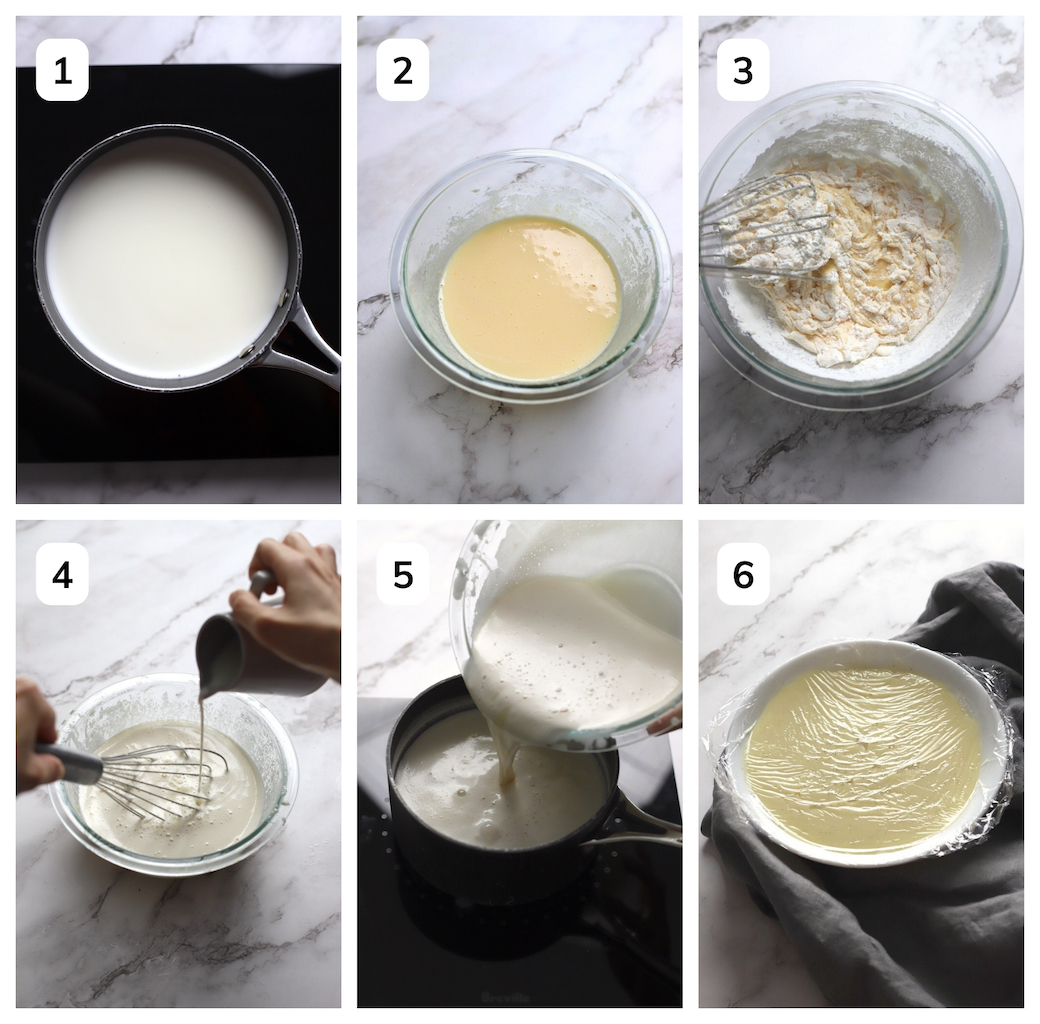
- Simmer the milk and vanilla (or flavour of choice) in a saucepan just until it comes to a boil. Add salt if using.
- Blanch the eggs and sugar. While the milk is heating, thoroughly whisk the eggs and sugar together in a bowl until very smooth and slightly pale and fluffy.
- Add the cornstarch to the egg and sugar mixture and whisk well until combined and no clumps remain.
- Temper the eggs. In a very slow, thin stream, pour the hot milk into the egg mixture while whisking constantly.
- Cook over medium heat. Return the mixture to the saucepan and cook while continuously whisking until it comes to a boil and has slightly thickened. Cook for a further 1-2 minutes. Remove from the heat.
- Transfer the pastry cream into a heat-proof bowl or scoop directly into a prepared piping bag (depending on what you want to use it for).
- Cover with plastic wrap ensuring it is in direct contact with the surface of the pastry cream to prevent a skin forming. Alternatively, whisk gently every 5 or so minutes until it reaches room temperature.
Top Tips for perfectly smooth creme patissiere
Tempering and blanching may the two most important steps in making a rich and smooth pastry cream. Find out more about these techniques below, along with my other top tips for perfect creme patisserie every time.
- Use fresh eggs – as they are used for thickening, adding colour and richness to the pastry cream, use the freshest eggs for best results.
- Use a high quality vanilla – this is the only flavouring used and really affects the quality of the final product. Using the seeds of a vanilla bean or a vanilla bean paste gives a better, richer flavour while adding those wonderful specks of vanilla as seen in bakery pastry creams.
- Use low heat – to avoid scorching the milk. The flavour of scorched milk will be noticeable in the final product. When cooking the whole mixture over a stove, using low heat prevents burning, overcooking, or creating inconsistencies in texture due to uneven heating and mixing.
- Whisk the eggs and sugar together thoroughly – this step is called ‘blanching’. Ensure you have whisked the eggs and sugar until slightly pale and smooth. In blanching, the sugar protects the egg proteins, preventing the eggs from curdling when the hot milk is added.
- Add hot milk to the egg mixture slowly – this step is called ‘tempering’. Tempering also helps prevent the eggs from cooking and curdling. Pouring the milk in slowly gradually increases the temperature of the eggs while diluting them. This helps achieve a perfectly smooth and lump-free consistency.
- Boil the pastry cream – once the mixture has thickened and come to a boil, cook for another minute. This helps the cornstarch achieve its maximum thickening power while neutralising the starch-dissolving proteins found in egg.
- Cover with plastic wrap – allow the creme patisserie to come to room temperature before using. As it cools, place a piece of cling film directly onto the pastry cream to stop a skin forming. A skin forming will cause lumps in the finished product. Once at room temperature, lightly whisk and use immediately. If you are making it ahead of time, place it in an air tight container, cover the top with plastic wrap to prevent a skin forming, and refrigerate for up to 3 days.
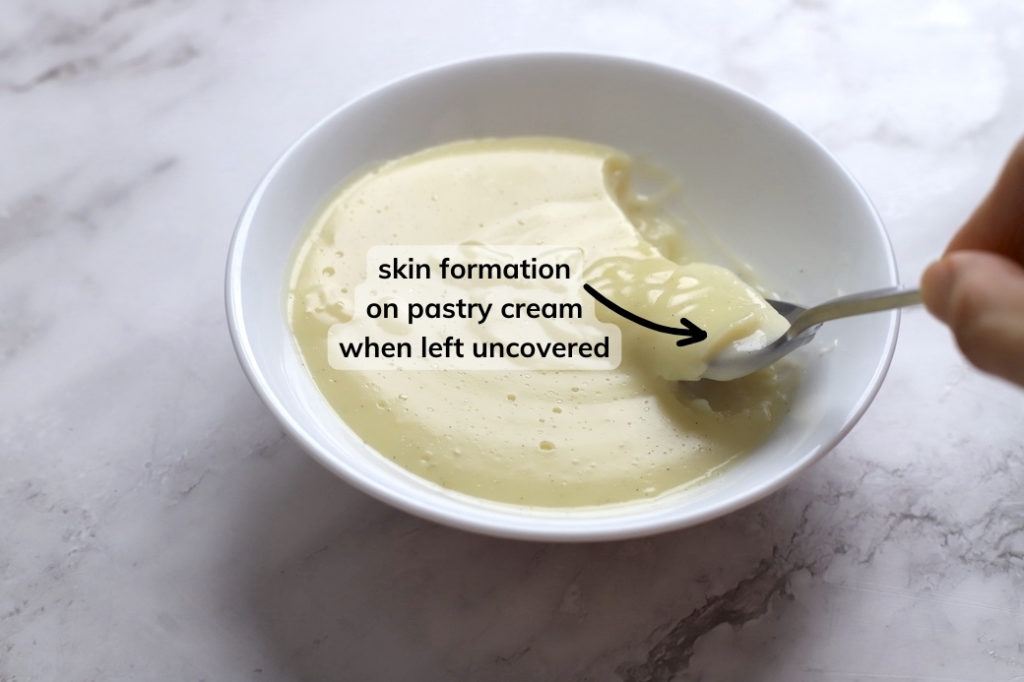
FAQ
What is the difference between pastry cream and custard?
While both creamy and delicious, pastry cream and custard have key differences. Pastry cream is thickened with both eggs and starch. It is denser and perfect for piping into pastries. Custard relies mainly on eggs as a thickening agent. It is lighter and ideal for pouring over desserts or enjoying solo.
Fun fact
Both ‘pastry cream’ and ‘creme patisserie’ refer to the same delicious filling. ‘Creme patisserie’ is simply the French term for it.
My pastry cream is runny/too thick, what went wrong?
Runny pastry cream: Possible culprits are undercooking (not reaching a boil), or not enough starch. Try cooking it for another minute or so on medium-low heat. If it isn’t thickening further, add 1 level teaspoon of cornstarch to a tablespoon of milk in a small bowl. Add the cornstarch slurry to the saucepan and continue to cook on medium-low heat for an additional 3 minutes, or to your desired consistency. Remember, the mixture will further thicken as it cools to room temperature.
Thick pastry cream: Likely too much starch or overcooked. Gently warm the pastry cream and thin it by whisking 2 tablespoons of hot milk at a time until it reaches the desired consistency.
Can I use whole eggs instead of just yolks in pastry cream?
Yes, you absolutely can! While yolks add a touch of richness, whole eggs work perfectly in pastry cream. To achieve the richness of using only yolks, simply add a tablespoon of softened butter to the recipe. I’ve personally never had to do this, but the option is yours. Using whole eggs lets you reduce waste and still enjoy a delicious filling! Whole egg pastry cream is lighter in colour compared to one made with yolks only.
My pastry cream is lumpy, how can I fix it?
Before getting into the kitchen, I recommend reading through my top tips here to achieve a silky smooth consistency every time. Lumps while cooking often means the eggs are scrambling, or you are unevenly mixing. Some fixes include:
- Temper the eggs correctly and carefully: To do this, add the hot milk to the egg and sugar mixture slowly while constantly whisking. You can pour the hot milk in a thin stream, or add small ladles of it into the egg mixture.
- Whisk constantly while cooking: Whisking the pastry cream constantly and somewhat vigorously ensures a silky smooth finished texture with no lumps.
- Strain any remaining lumps: Sometimes pastry cream can appear lumpy to due uneven whisking. Thoroughly whisk it and pass it through a fine-mesh sieve if any stubborn lumps persist.
Can I freeze pastry cream?
Freezing pastry cream is not recommended. The texture tends to change when thawed, becoming grainy or runny. It is possible to refrigerate it for up to 3 days, in an air tight container. Bring to cool room temperature and whisk well to return it to its original silky creaminess.
Baking Tip 101
You can safely increase or decrease the amount of sugar by about 20 grams (⅛ cup) to suit your desired sweetness.
Additionally, you can safely adjust the amount of cornstarch used in the recipe.
- → Use 3 tablespoons (30 grams) for a soft pastry cream that’s great as a topping for desserts.
- → Adding 4 tablespoons (40 grams) of cornstarch makes a firmer pastry cream ideal for profiteroles, eclairs, and small tarts.
- → Use 5 tablespoons (50 grams) for a very firm pastry cream that can be piped decoratively or used in larger tarts.
- → Making a very stiff pastry cream using 6 tablespoons (60 grams) of cornstarch is great for desserts such as custard slice, or for using as base for making German Buttercream.
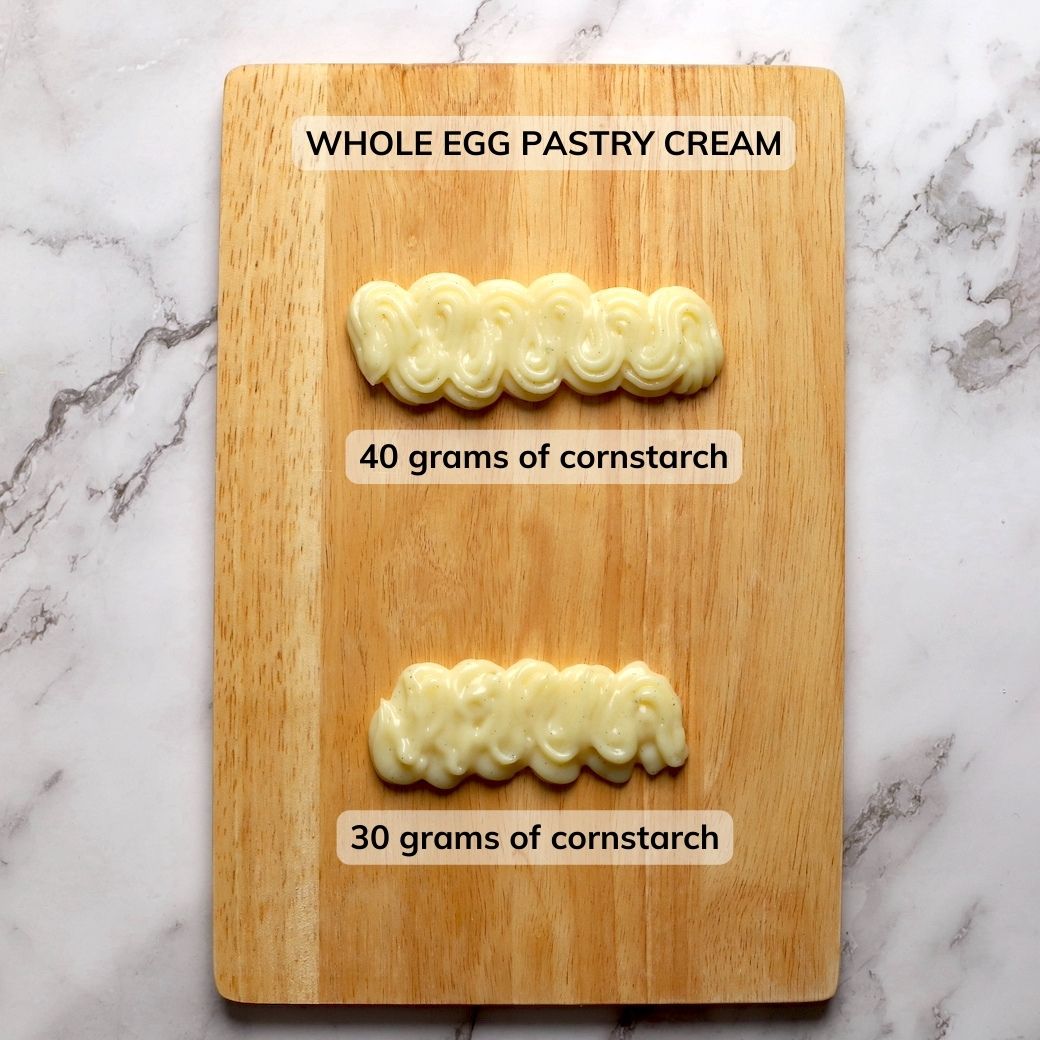
Variations to incorporate other flavours
Infuse your creme patisserie with endless flavour variations! Incorporate your chosen flavouring in small amounts and taste test regularly to achieve the flavour you’re after.
- Coffee creme patisserie – Dissolve a 2-3 tablespoons of instant coffee granules into the hot milk. Continue the recipe normally using this coffee flavoured milk.
- Chocolate creme patisserie – Add up to half a cup of chocolate ganache to the vanilla pastry cream while it’s still hot. It’s best to use chocolate ganache made using the 1:1 ratio of chocolate to cream. Using pure chocolate is not recommended as it will cause the creme patisserie to firm up too much once cooled to room temperature.
- Rosewater creme patisserie – This iconic middle eastern flavouring is perfect for your fusion desserts. Add 1 teaspoon of rosewater or orange blossom water to the hot milk. Continue the recipe normally using this flavoured milk.
- Peanut butter creme patisserie – Add a few tablespoons of smooth peanut butter into the hot milk. Continue the recipe normally using this peanut butter flavoured milk.
- Citrus creme patisserie – Lightly whisk the zest of your desired citrus (lemon, orange, mandarin, etc.) into the hot pastry cream.
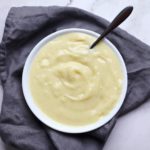
Whole Egg Vanilla Pastry Cream (Creme Patisserie)
Ingredients
- 2 cups whole milk
- 150 grams (¾ cup) granulated sugar
- 40 grams (4 tablespoons) cornstarch
- 2 large eggs
- 2 tsp vanilla bean paste, double if using extract
- ¼ tsp salt, optional
Instructions
- Heat the milk and vanilla and salt (if using) in a saucepan over medium heat until the mixture only just comes to a boil.
- While the milk is heating, whisk the eggs and sugar together in a bowl until smooth, slightly pale, and somewhat fluffy.
- Add the cornstarch to the egg mixture and whisk until well combined and no lumps remain.
- Pour about half a cup of hot milk in a slow, thin stream into the egg mixture while whisking constantly. Continue doing this until all the milk has been incorporated into the egg mixture.Note: It’s important that you add the hot milk slowly to prevent the eggs from scrambling. If you add the boiling milk to the egg mixture too quickly or all at once, the eggs will cook and curdle and the pastry cream cannot be made.
- Return the mixture to the saucepan and cook it over medium low heat while constantly whisking, until thickened and it comes to a boil. This will take about 2-3 minutes. Once the mixture comes to a boil, continue to cook it while constantly whisking for about 1 minute more.
- Transfer pastry cream into a heat-proof bowl or let cool slightly and scoop directly into a prepared piping bag (depending on what you want to use it for). Note: After scooping into a piping bag, set it aside until the pastry cream is cool enough to handle.
- Cover with plastic wrap ensuring it is in direct contact with the surface of the pastry cream to prevent a skin forming. Alternatively, whisk gently every 5 or so minutes until pastry cream reaches room temperature. Use as desired.
Tried it? Let me know if you liked it!
Let’s hear it! Did you whip up this silky-smooth whole egg vanilla pastry cream? What are you planning to make with it? Leave a comment with how you went, rate the recipe so others can find it, and share your creations on Instagram with @tilgoldenbrown #tilgoldenbrown so I can feature them. Happy baking! 
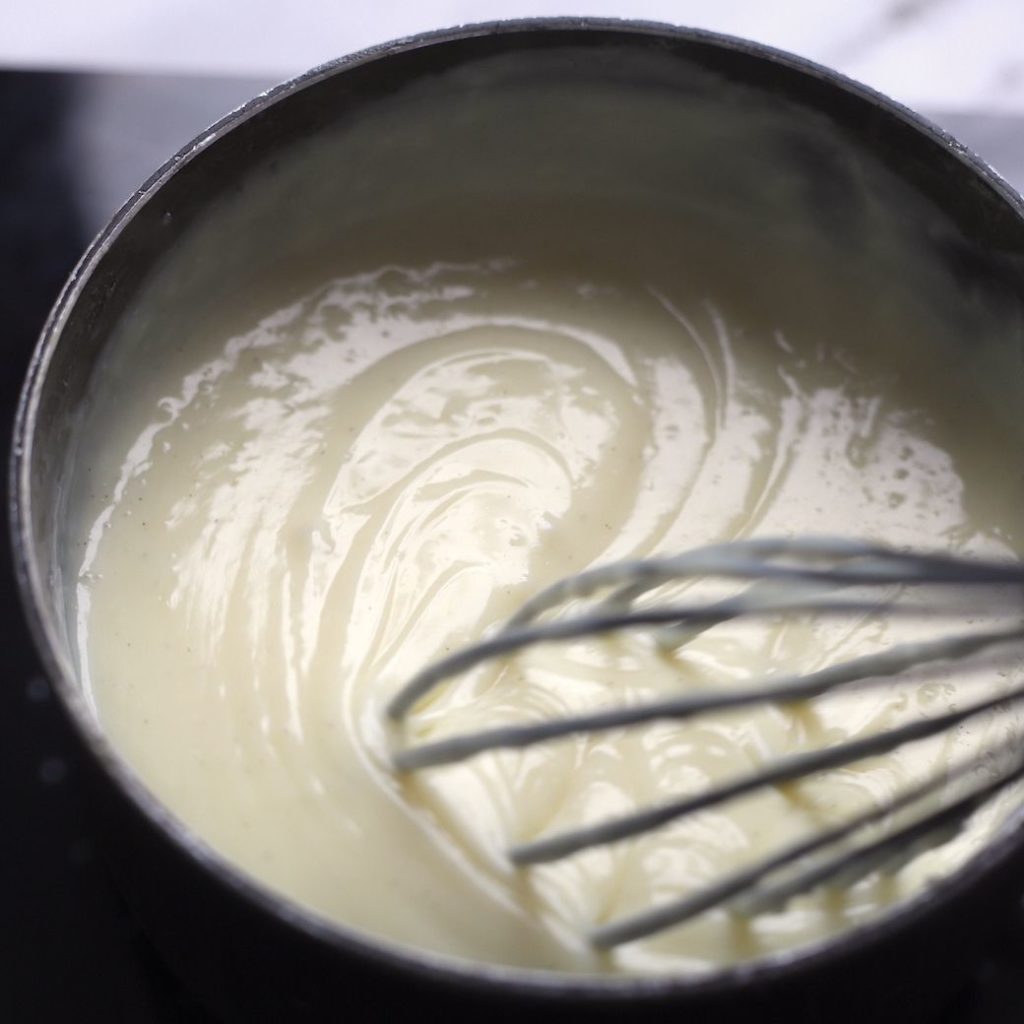
This pastry cream is so good and I love the fact it uses whole eggs, it’s creamy and the right consistency for fruit tarts🥰thank you
Thank you for the lovely feedback, Andri. So glad to hear you’ve enjoyed this recipe. 😊
I was a little scared of making pastry cream with whole eggs, especially because I started pastry school not long ago and the recipe we learned was a bit different, but the thing is that it would always get lumpy, no matter what I did! Even after applying some tips from my teacher my pastry cream would still come out lumpy and it was extremely frustrating! How couldn’t I make a decent pastry cream if I was attending pastry school? So I decided to give your recipe a go and, oh boy, was I pleasantly surprised. I couldn’t believe how easy it was and how smooth it came out! Even when the mixture seemed too foamy while on the stove, in a matter of seconds all the foam disappeared and I was left with the best pastry cream I’ve ever made.
Thank you so much! 🙂
Love this recipe! So easy to make. Absolutely delicious!
Really nice job! On the recipe and the thought put into the entire post. The corn starch ratio comparison was very helpful!
This recipe makes a really nice pastry cream, and I think an improvment with a touch less richness than a yolk only.
Thanks for the help!
So glad to hear you’ve enjoyed the recipe, Chris!
Can’t wait to try this recipe, would I be able to substitute the corn starch with flour?
Whilst you can make the substitute, it’s best to stick with cornstarch as it creates a smooth, glossy, and more delicate texture. Flour generally results in a thicker, heavier texture. There is also a greater chance of a “floury” taste.
Salam and thank you for this recipe! It was perfect for my napoleons, but I don’t think I would have enjoyed it in an eclairs because it was really thick. I wanted to share that I made it even less wasteful (dishes wise) by adding the eggs and cornstarch at the beginning of the recipe and just whisking really well until it started to bubble and I had zero issues with curdling! Will definitely be using again inshallah. Thank you!
Wa alaykum asalam Lena, so happy to hear you enjoyed the custard recipe! Less dishes is always a win! It’s definitely a personal preference, but I love thick custard in my eclairs. 😋 You can adjust the thickness by reducing the cornstarch and cooking for a lesser amount of time. Happy baking!
Loved the fact that it uses whole eggs. Tasted amazing and easy to make!
So glad to hear that, Ingrid!